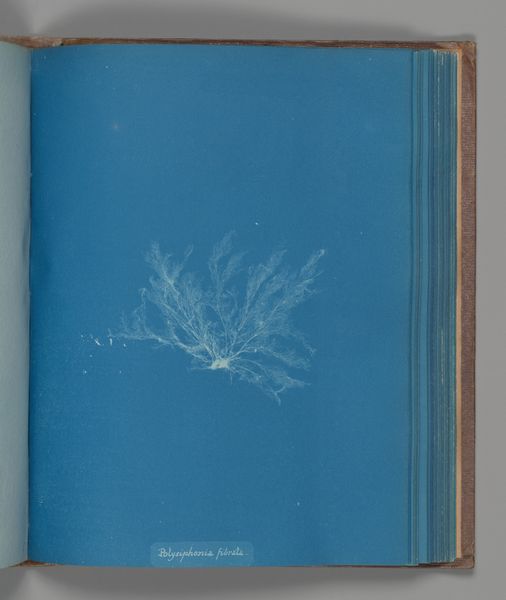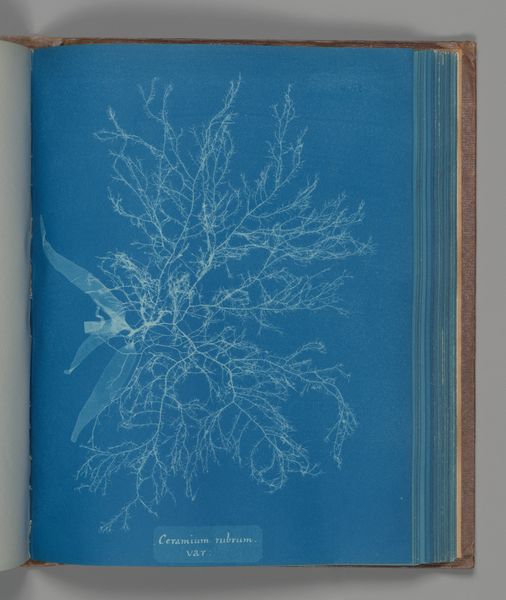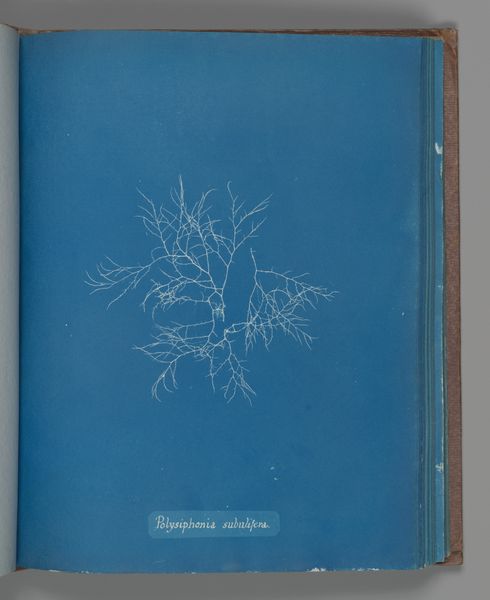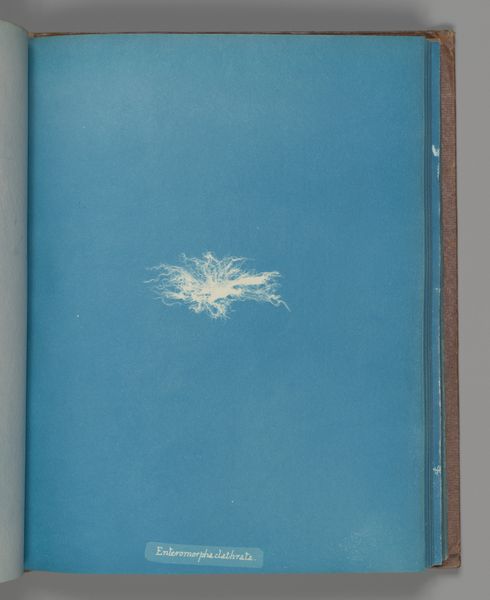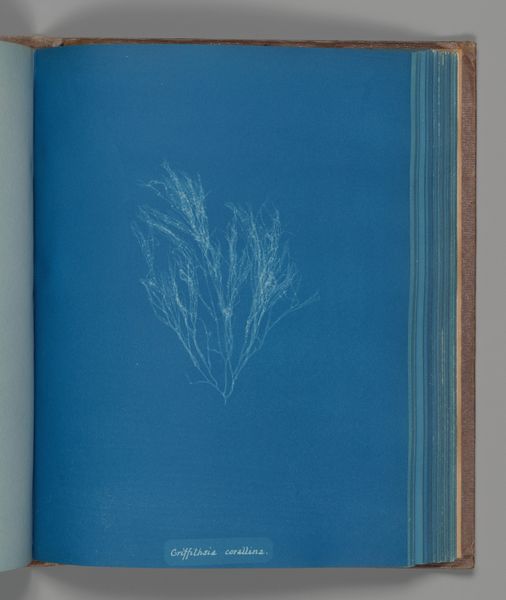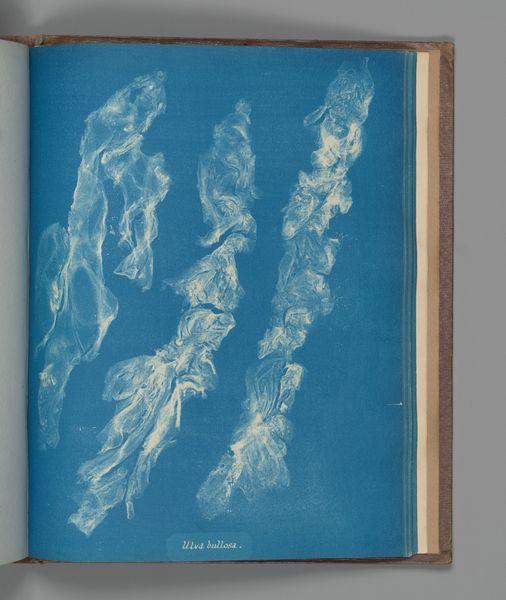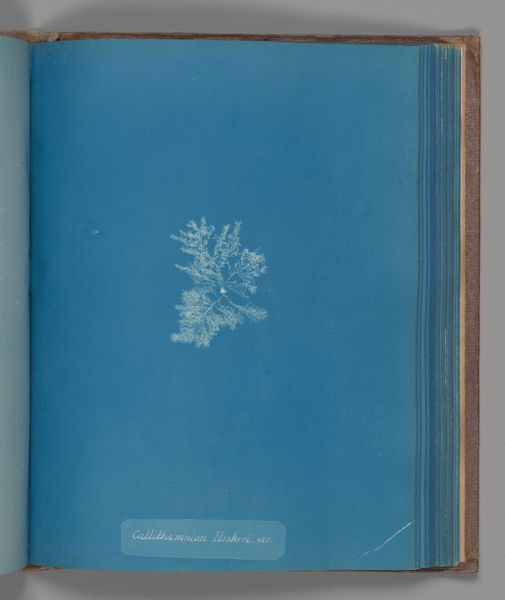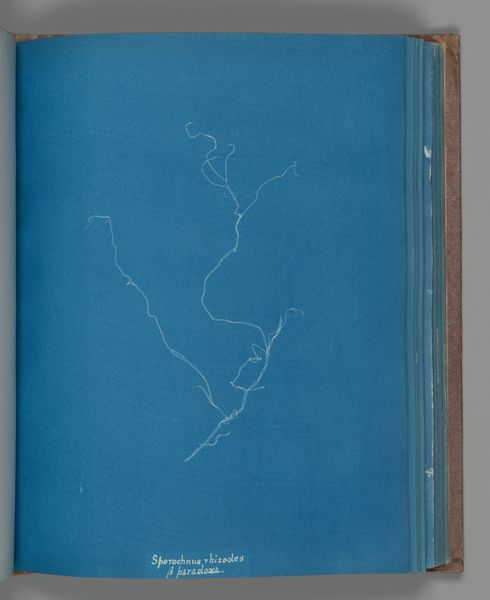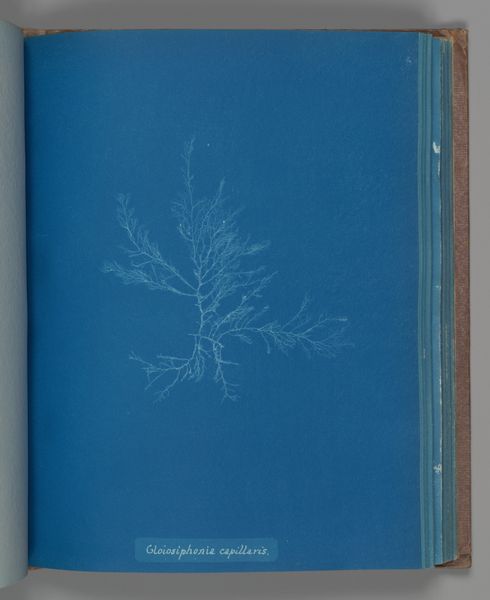
print, cyanotype, photography
# print
#
cyanotype
#
photography
#
realism
Dimensions: Image: 25.3 x 20 cm (9 15/16 x 7 7/8 in.)
Copyright: Public Domain
Editor: So, this cyanotype by Anna Atkins, titled *Zygnema nitidum*, dating from the early 1850s, presents what looks like a delicate mass of algae against this striking Prussian blue background. It feels almost ghostly, and I'm really curious about its story. What stands out to you when you look at it? Curator: It's fascinating how Atkins employed this relatively new technology, cyanotype photography, not just for artistic expression, but primarily as a scientific tool. Consider that her *Photographs of British Algae: Cyanotype Impressions* is considered the first book illustrated with photographic images. Doesn't that challenge our typical understanding of photography's role at the time? Editor: It absolutely does! It's easy to see photography as purely artistic early on, but it also played a vital role in the scientific method. How do you think Atkins' position as a woman impacted her reception in the scientific community and in the art world at that time? Curator: That’s a very insightful question. The societal context is key. While science was increasingly professionalized, it wasn’t always welcoming to women. Atkins used her privilege – her access to scientific circles through her father – to contribute, effectively circumventing those institutional barriers. Did the art world recognize the work as art at this time? Likely, not yet. This work falls somewhere in between, occupying an interesting liminal space between science and art that speaks to photography's early development and reception. Editor: That's so interesting! So, this image reflects a specific moment when the lines between artistic expression and scientific documentation were especially blurred, also raising questions about how access and gender influenced what art got made and how it was valued. Curator: Precisely! It compels us to reflect on who shapes our understanding of art and how the institutional forces, then and now, affect the narrative. I appreciate you pointing out the ghostly mood of the work because, yes, these historical implications really haunt it for me.
Comments
No comments
Be the first to comment and join the conversation on the ultimate creative platform.
